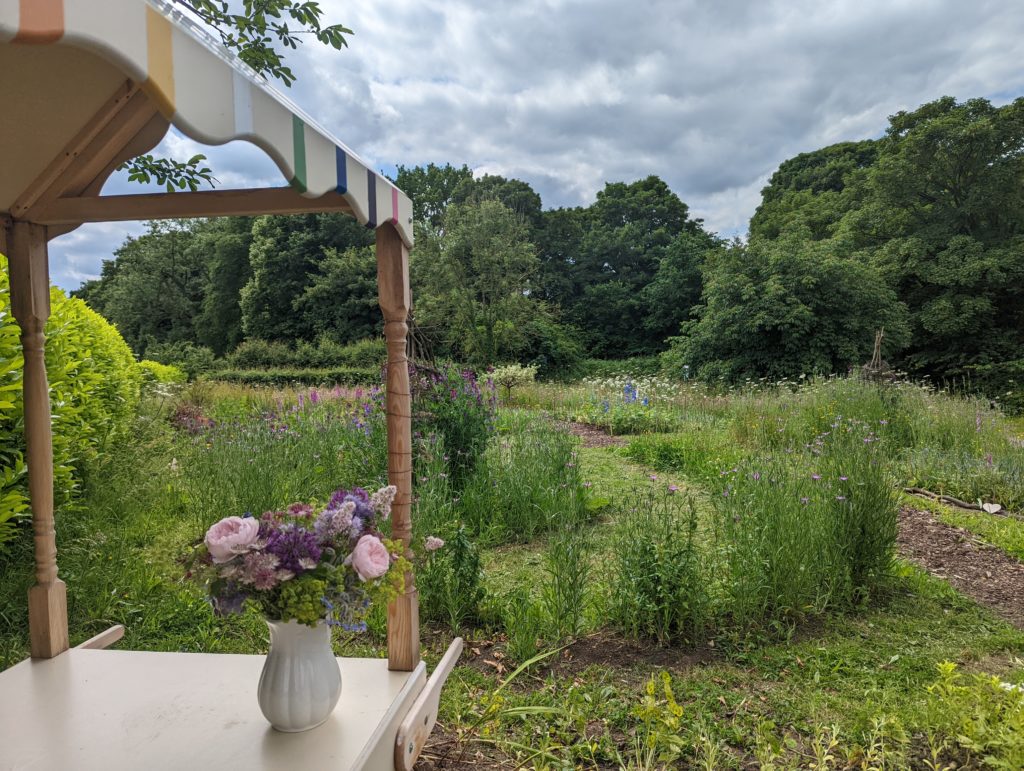
December is most certainly here, we may only be a few days into the month but already Jack Frost is well and truly here covering our seedlings and plants in a layer of ice and snow, and personally making me curse the fact I have once again for a third year running failed to purchase practical warm winter boots!
It’s an odd time of year for gardening, a time of mild fear and panic, wondering will our plants make it through winter as we scurry along with horticultural fleece and grandmas old scarf to cover our most vulnerable plant babies. As well as being a time of hope for what will make it through winter and emerge next year. But mostly it’s a time where we are completely out of control. It’s far too cold to put a spade in the ground, too late to fret about biennials or autumn annuals we wished we’d sown, and too pointless to worry about whether our plants and seedlings will survive winter, as even with our best efforts they ultimately have one of two chances of survival.
This realisation we are mostly out of control is truthfully quite comforting to me, once again Mother Nature is taking charge and we are forced to sit back as she cleans the ground of germs in her cold winter state and presents us with a period of time to simply step away from the garden and think about what we’d like it to look like and produce next year.
Sitting inside, simply letting the garden be. This is the perfect time to enjoy a hot drink grab a pen and paper and plan the most wonderful 2024 cutting garden. And I have four main tips on how on how to plan to have the best cutting patch ever in 2024!
Grab a calendar and make notes of sowing days:
I got this tip from the brilliant Georgie Newbery of Common Farm Flowers and I must say it really does help. Perhaps you like to do all your sowings on specific days, perhaps you like to spread it out, either way writing it in your calendar massively helps to remind you to actually do it for when you intended. April, July and October are my main months for sowing and I personally like to spread my sowing out throughout each month so I do half of my spring sowing for half – hardy annuals at the beginning of April and half my spring sowing at the end of April. Half my summer sowing for biennials at the beginning of July and half at the end of July. And half my Autumn sowing of hardy annuals at the beginning of October and half at the end of October. You could change the dates to suit you or add in more or less sowing dates, either way this simple trick of writing the dates in the calendar really helps to ensure you do sow what you intended, when you intended to!
Make a note on what did well for you this year and you enjoyed and remember to sow it again.
It sounds obvious but ensuring you remember to sow something that did well this year and of course that you enjoyed is a really good idea. I can’t tell you how many times I’ve forgotten to sow something I loved from a previous growing season and cursed myself the next year for not doing so! Make a list of what did well for you, not just this year but in previous years too, and make a note of them in your calendar on your sowing dates so you definitely don’t forget to sow them and then you can feel comforted knowing your tried and tested flower heroes will bloom again!
Grow simple staples.
Half the fun of growing seeds is growing something new, but let’s be honest, how many times has growing something new actually led to disappointing results instead of beautiful exotic blooms. I know for myself growing new things I’ve never tried before can be very hit or miss in the results, somethings are wonderful and become a new favourite flower and other things are just well… a flop. That’s why growing a few simple staples is crucial, seeds you know will give you brilliant results with little effort, the seeds you know you can not fail with and are so simple that you are guaranteed armfuls of blooms even if you struggle with other things. If you haven’t already got a list of super simple seeds to sow, I highly recommend these 14 seeds as I consider them the easiest peesiest seeds to grow: Ammi Majus, Borage, Briza, Calendula, Cerinthe, Chrysanthemum rainbow, Chrysanthemum Crazy daisy, Corncockle, Cornflower, Eschscholzia, Feverfew, Godetia, Phacelia, Salvia Viridis, and Sweet Pea Cupani. All of these seeds can fill gaps, be easily succession sown and create a backbone to the cutting garden, giving an abundance of blooms that you can rely on time and time again.
Work out combinations you’ll love for your cutting garden.
This is probably the part we all get most excited about planning wise, we all start looking online at seeds, flicking through our saved images on social media of colour schemes and arrangements we loved and begin trying to put together great combinations ourselves. It’s a wonderful joyful thing to do and gives us real excitement for the future. I highly encourage it, and whilst you should absolutely go for colours you love and flowers you love the look of, if you are you growing cut flowers it is really worth considering shape too, as a combination of different shapes creates a varied and beautiful bouquet. The five main shapes I would definitely consider growing include, a focal flower (your voluptuous focal point of the bouquet), lace (a beautiful umbellifer shape or a frothy flower), foliage (greenery not just from shrubs but from early annual growth too), a spike (an upright spire of blooms) and a daisy shape (a classic flower with a centre stamen and lots of petals surrounding the edge). You could also try and include other shapes and elements too such as texture from grass and seed pods as well as including a scented element in every bouquet. But as lovely as these things are the five main shapes listed above really are the fundamentals for a lovely bouquet. So whilst you are looking at seeds keep these shapes in mind for creating a cutting garden with a variety of different shapes. I’ve also listed below five really easy hardy seeds in each of these shapes that would make a wonderful bouquet below: Godetia (focal), Phacelia (lace), Cerinthe (Foliage), Salvia Viridis (Spike), Feverfew (Daisy).
Armed with your calendar dates for sowing, your list of seeds that served you well in the past, a list of some simple staple seeds for reliable flowers and a list of different seeds for different shapes for varied bouquets you should be well on your way to planning the best cutting patch ever in 2024. So enjoy being tucked in away from the cold, with a hot drink and planning your year of wonderful blooms!
As always, happy sowing!
Higgledy Gemma (aka colour wheel garden)
